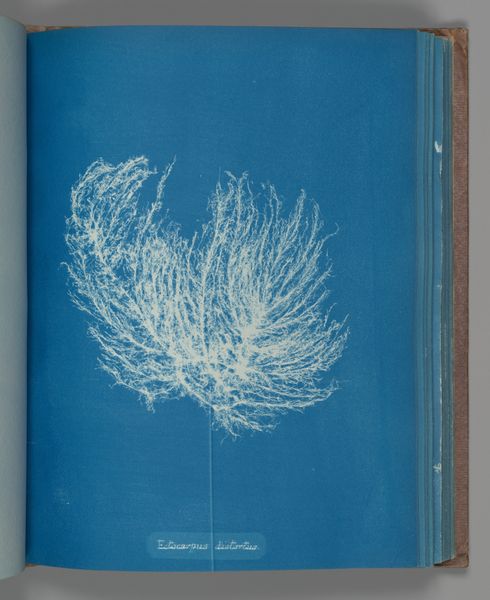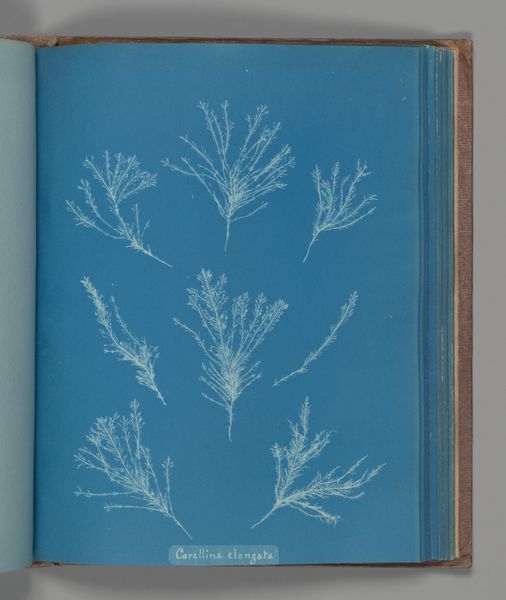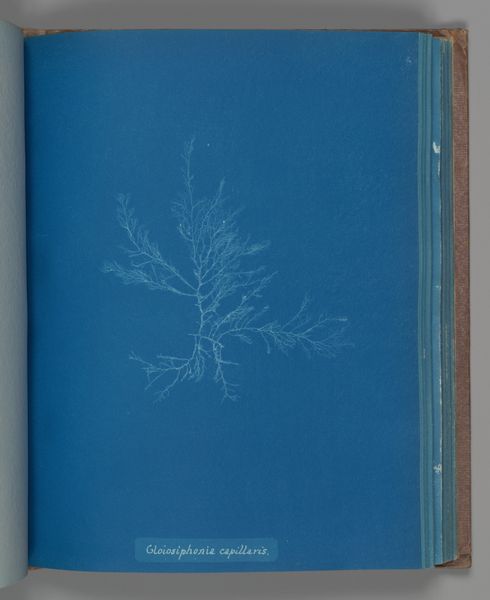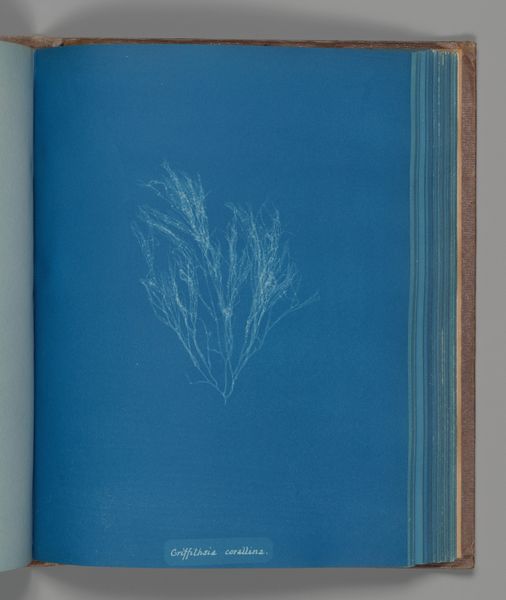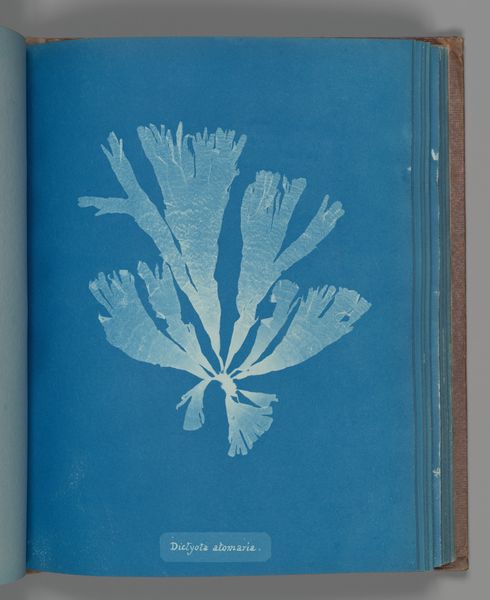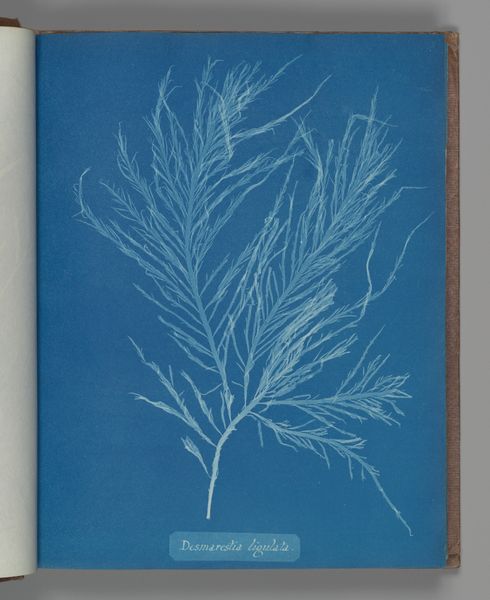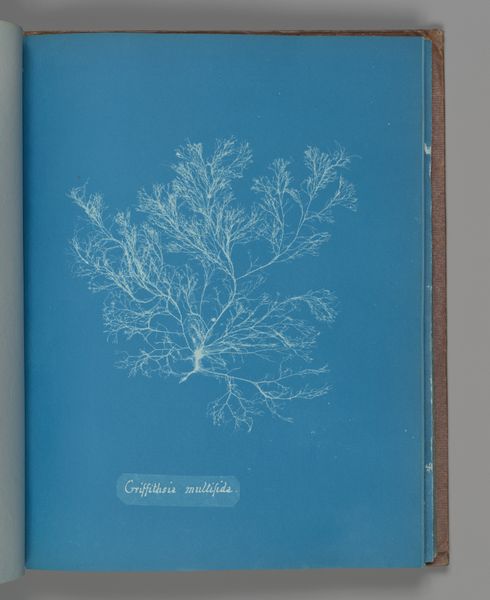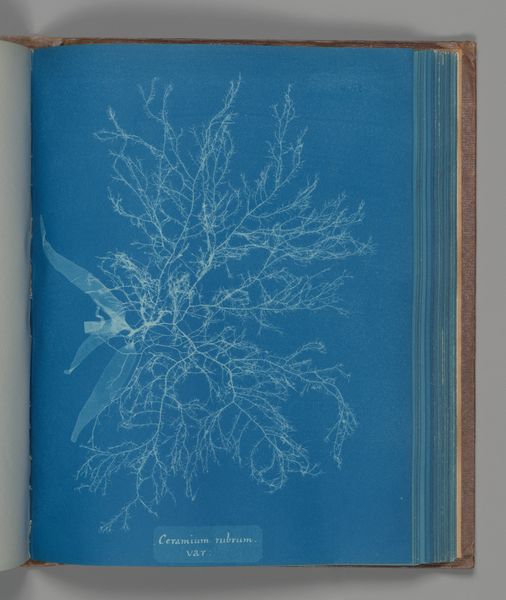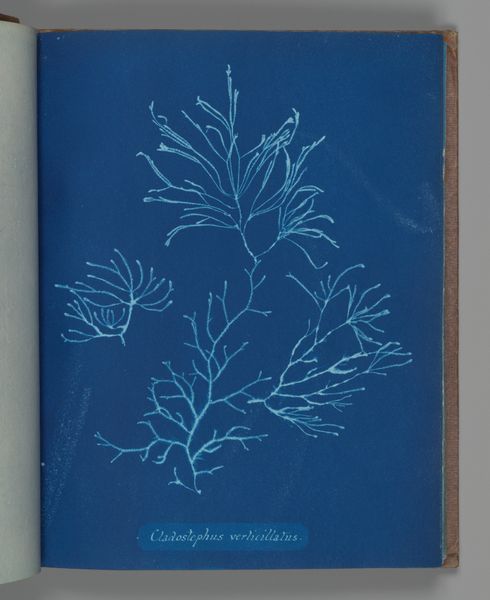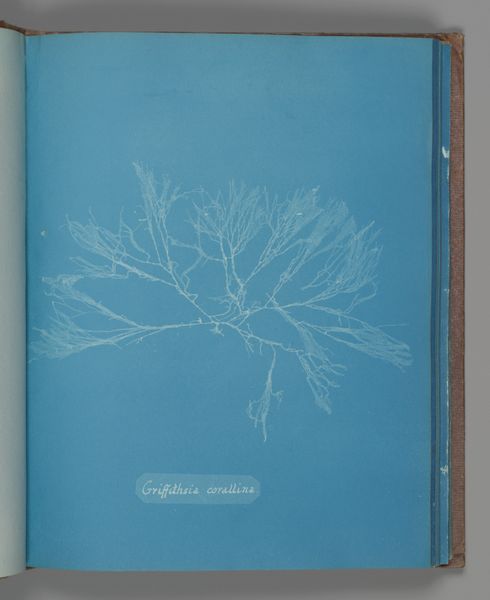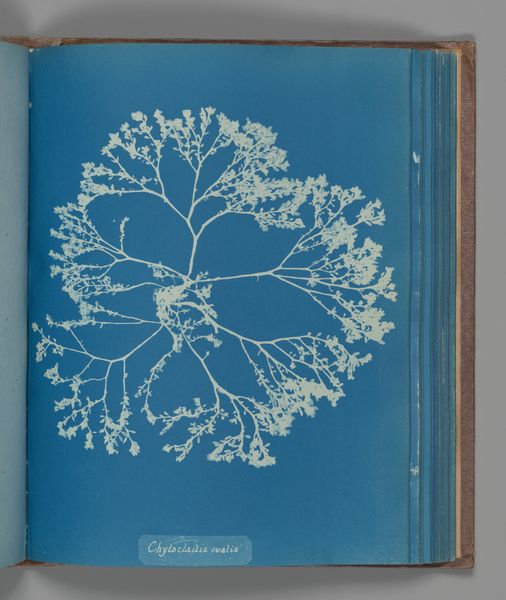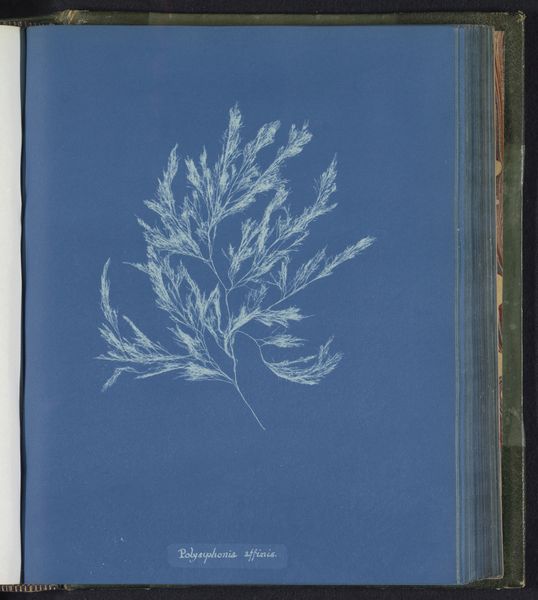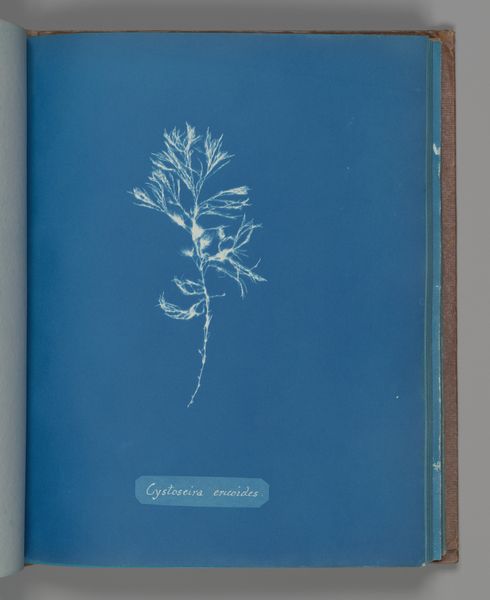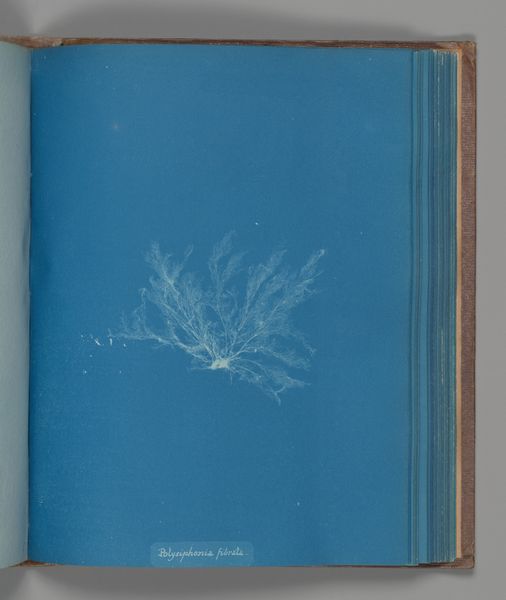
print, paper, cyanotype, photography
#
still-life
# print
#
paper
#
cyanotype
#
photography
#
realism
Dimensions: Image: 25.3 x 20 cm (9 15/16 x 7 7/8 in.)
Copyright: Public Domain
Curator: What a striking and ethereal image. There's an almost otherworldly quality to it. Editor: Indeed. And all rendered in cyanotype – it’s Anna Atkin's "Rhodomenia Palmata Sarniensis," dating from the early 1850s. Look at the texture, that blueprint feel. You can sense the hands involved, the precise labor. Curator: It resonates deeply, this spectral seaweed floating in a cobalt void. It calls to mind the early days of photography. The symbolism of algae—life arising from water, the hidden depths of knowledge. There’s something primordial about it. Editor: Don't you think that the stark presentation has as much to do with the economics and realities of production, though? Atkins was producing scientific records, wasn't she? Curator: But consider its deeper visual appeal. The starkness becomes an icon of knowledge. What seems like an objective rendering also captures the Victorian fascination with the natural world, classified, observed, and almost worshipped. It bridges science and art. Editor: Interesting that you call it worship. The repetitive production, using accessible processes… that removes some of the aura usually around art. It’s a democratized approach to both scientific record and aesthetic object. And all this done at a time when women were so heavily excluded from both science and art, making visible a world they were routinely told they did not belong to. Curator: I’m glad you raised that. By mastering cyanotype, Anna Atkins carved out a niche. It speaks to the potential of the human spirit to create lasting beauty from readily available materials, imbuing those very materials with new cultural meanings. Editor: Indeed, and recognizing the means of production adds such a vital layer of understanding. Curator: Precisely. This simple print is more profound once one considers how it echoes both scientific curiosity and artistic agency, all under the cover of realism. Editor: I think viewing it materially adds an appreciation of process and purpose. It reveals something not so simple after all.
Comments
No comments
Be the first to comment and join the conversation on the ultimate creative platform.
